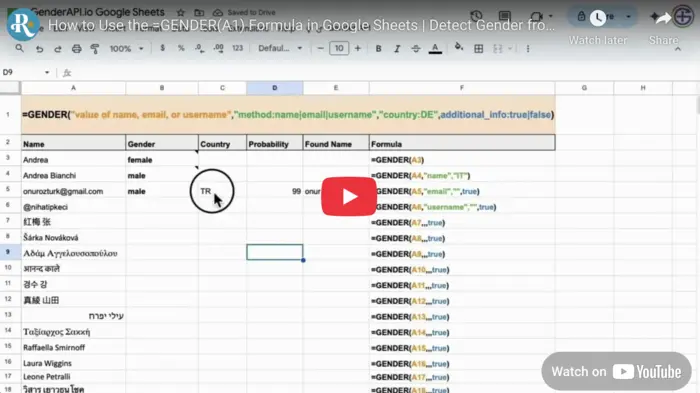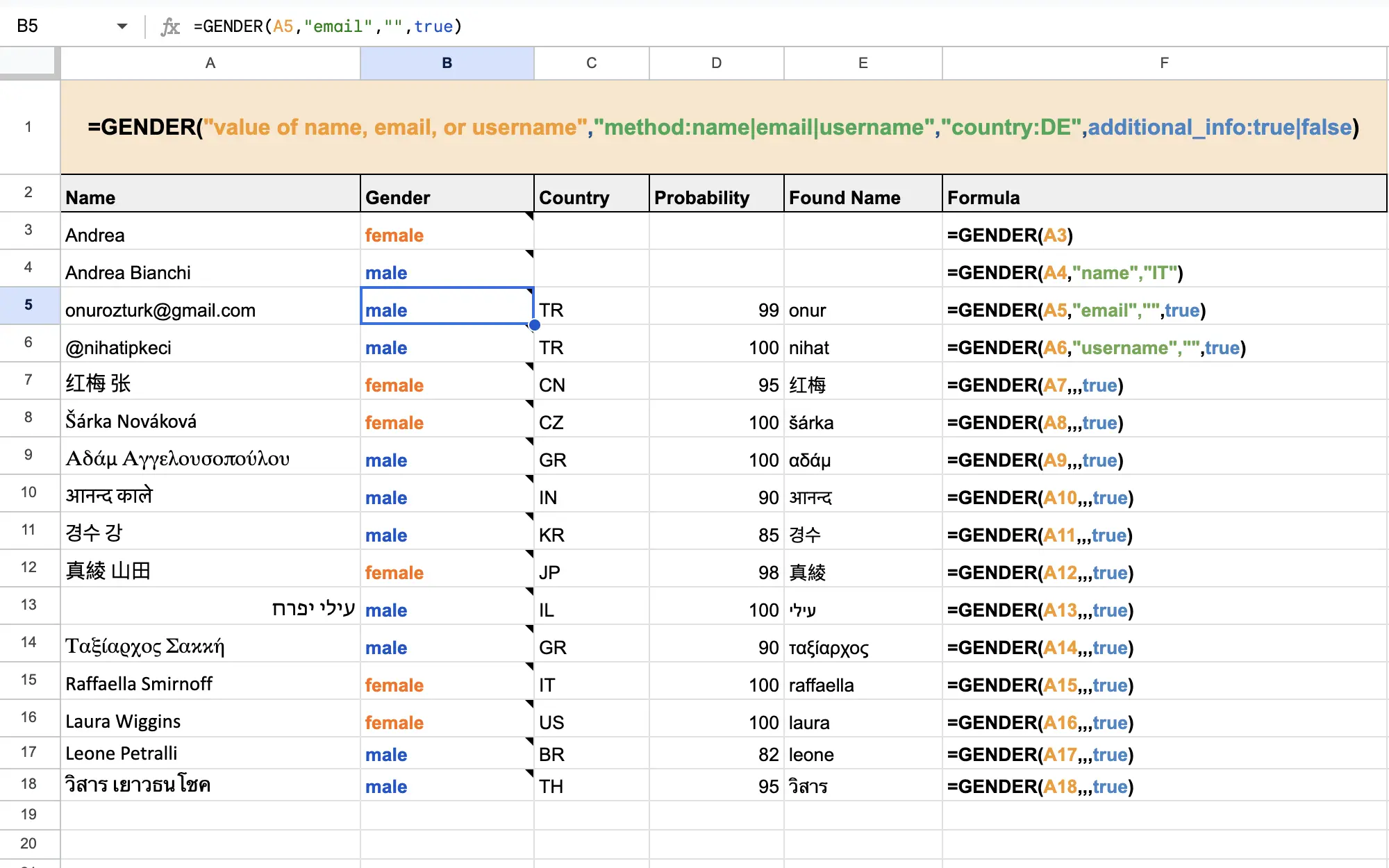Frequently Asked Questions
🗒️ Why do result cells have a note with JSON content?
If you hover over a result cell, you’ll notice a small triangle with a note showing something like:
{"formula":"=GENDER(\"Name\",...)", "value":"male"}
This note is automatically added to help preserve your API credits.
Google Sheets may re-evaluate formulas when columns or rows are added, removed, or shifted — even if the data hasn’t changed.
To prevent unnecessary API calls and credit usage, the result and formula are cached in the note. When the same formula is triggered again, the system checks the note first and reuses the saved value instead of making a new request.
This makes the solution more efficient and protects your daily quota from being wasted on redundant operations.
🔌 Do I need to install the Gender API Add-On to use the =GENDER() formula?
Yes, the formula works only if the Gender API Google Sheets Add-On is installed and authorized in your spreadsheet.
📧 Can I use email addresses or usernames instead of names?
Absolutely! The =GENDER() formula supports detection based on names, email addresses, and usernames. Just adjust the second parameter accordingly (e.g., "email" or "username").
🧩 What happens if I uninstall the Add-On?
If the add-on is removed, the formula-based results will no longer appear, as they are dynamically generated and not saved as static data.
📊 What are the daily usage limits for the formula?
Google imposes daily quota limits for custom functions using UrlFetchApp:
• Gmail users: 20,000 requests/day
• Education users: 30,000 requests/day
• Workspace/Business users: 100,000 requests/day
💾 Is the data generated by the formula saved permanently?
No, the data is not persistent. If the formula is removed or the add-on is disabled, the values will disappear unless copied manually as static data.
🔑 Where can I get my free API key?
You can register and get your free API key from the official Gender API dashboard at app.genderapi.io.

